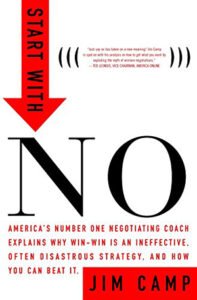|
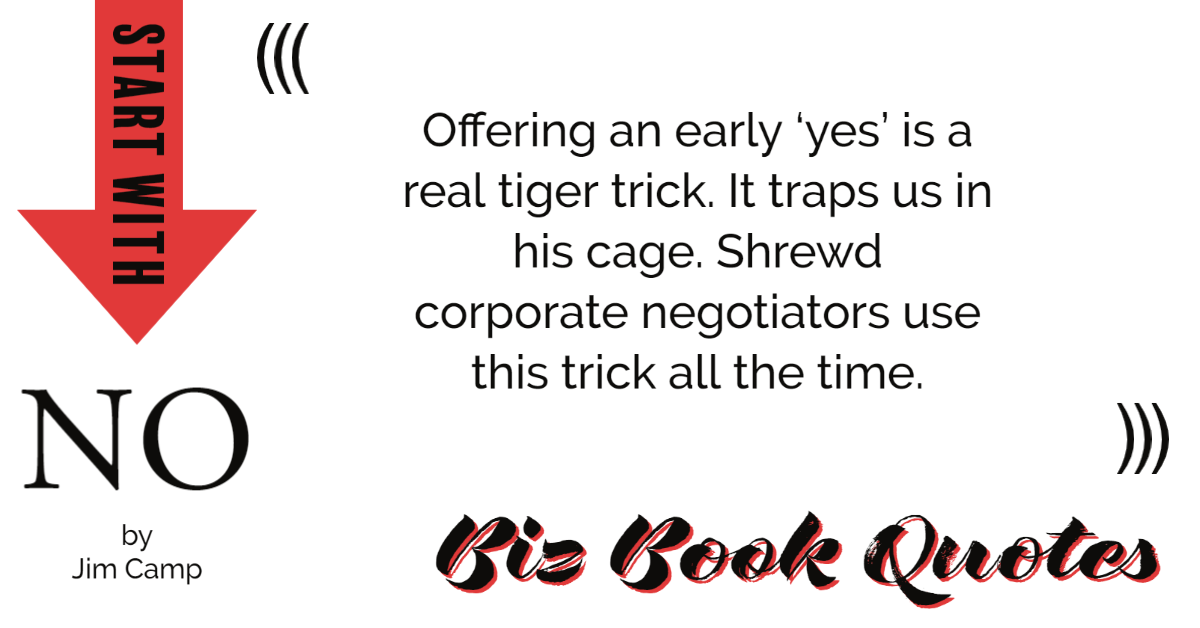
|
Start With No:
Offering an early ‘yes’ is a real tiger trick. It traps us in his cage. Shrewd corporate negotiators use this trick all the time.
|
47 |
|
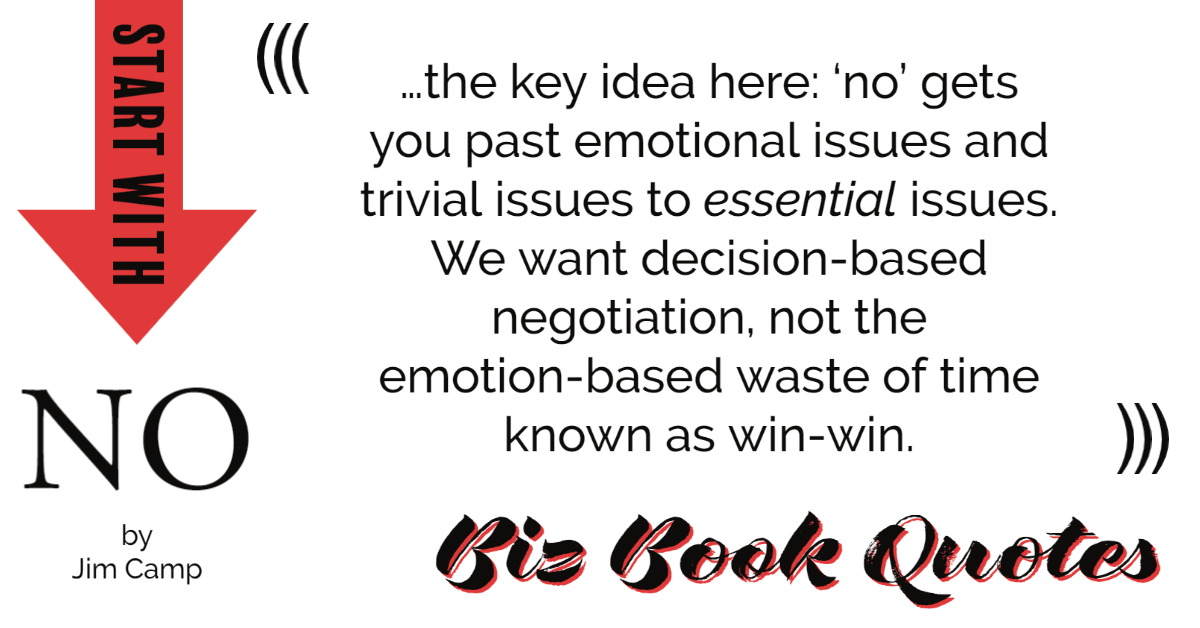
|
Start With No:
…the key idea here: ‘no’ gets you past emotional issues and trivial issues to essential issues. We want decision-based negotiation, not the emotion-based waste of time known as win-win.
|
48 |
|
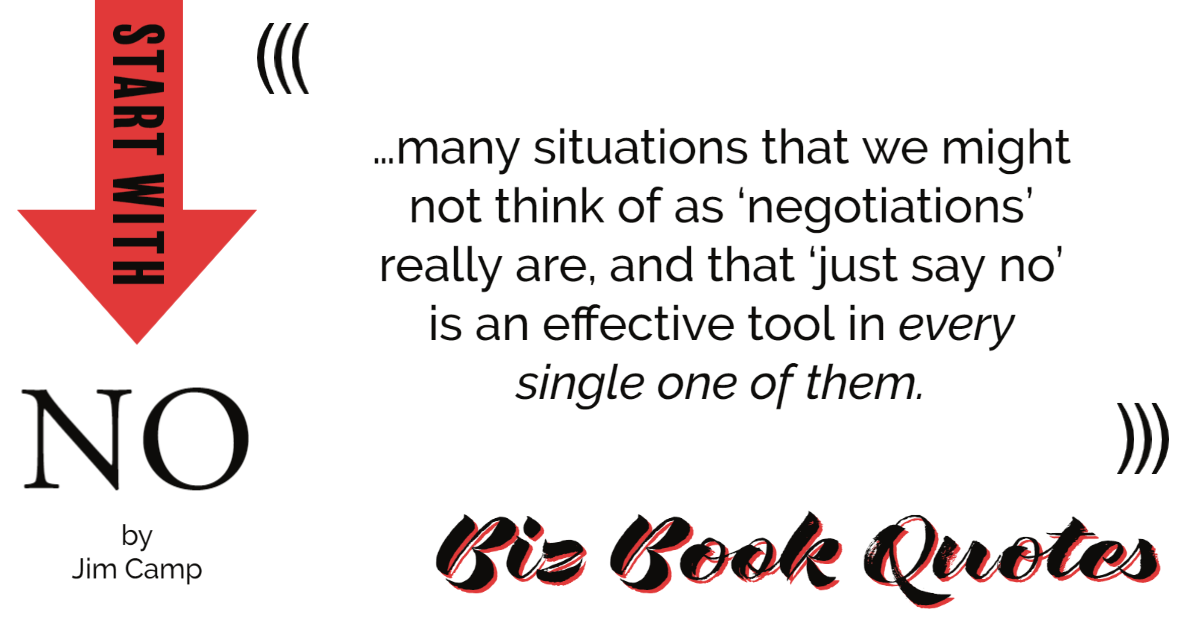
|
Start With No:
might not think of as ‘negotiations’ really are, and that ‘just say no’ is an effective tool in every single one of them.
|
53 |
|
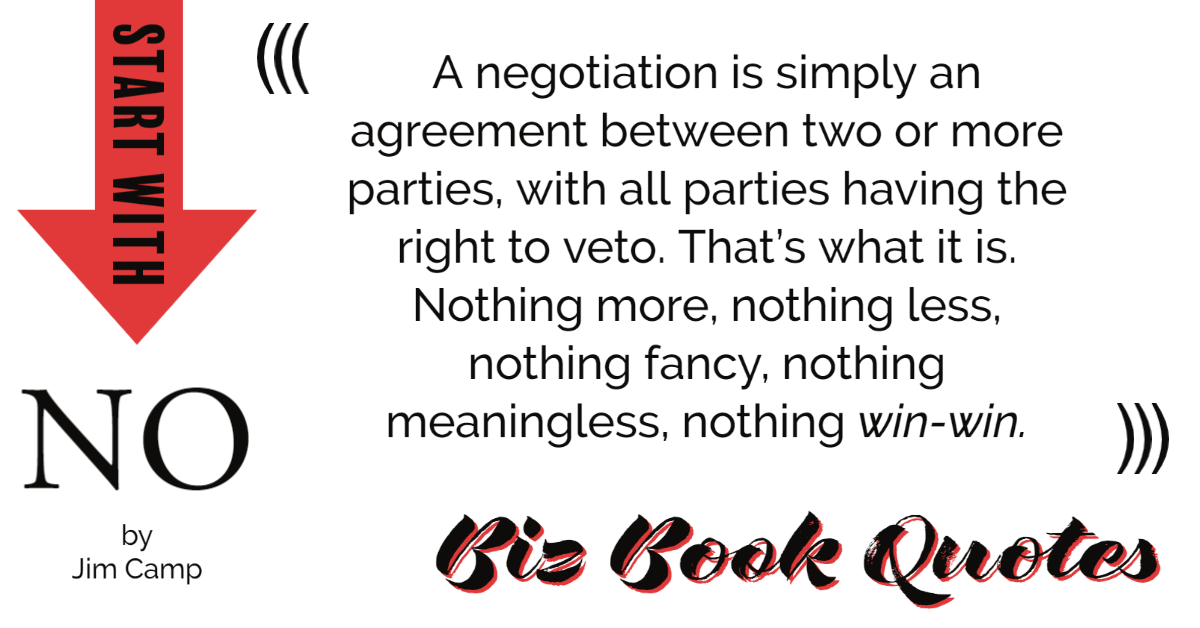
|
Start With No:
A negotiation is simply an agreement between two or more parties, with all parties having the right to veto. That’s what it is. Nothing more, nothing less, nothing fancy, nothing meaningless, nothing win-win.
|
55 |
|
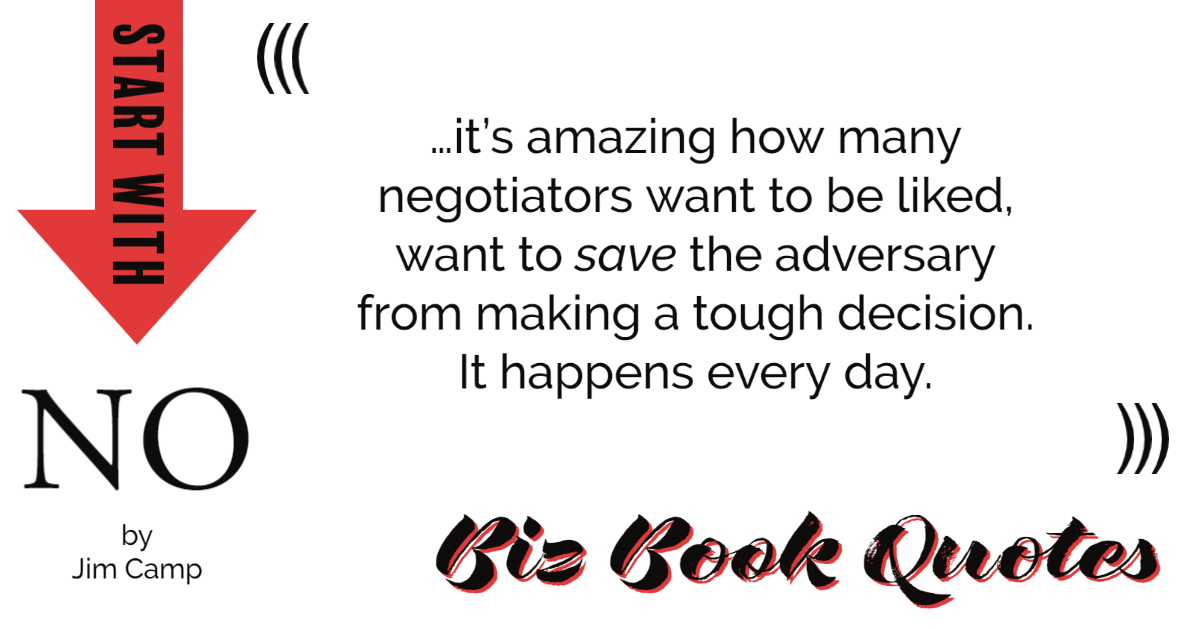
|
Start With No:
…it’s amazing how many negotiators want to be liked, want to save the adversary from making a tough decision. It happens every day.
|
58 |
|
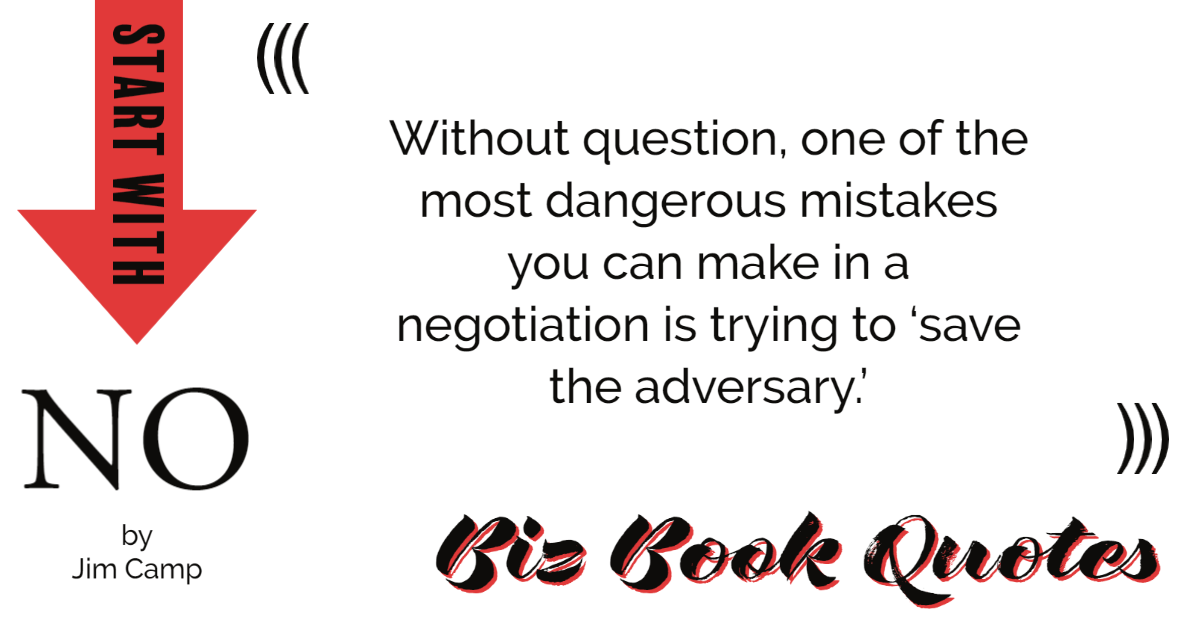
|
Start With No:
Without question, one of the most dangerous mistakes you can make in a negotiation is trying to ‘save the adversary.’
|
59 |
|
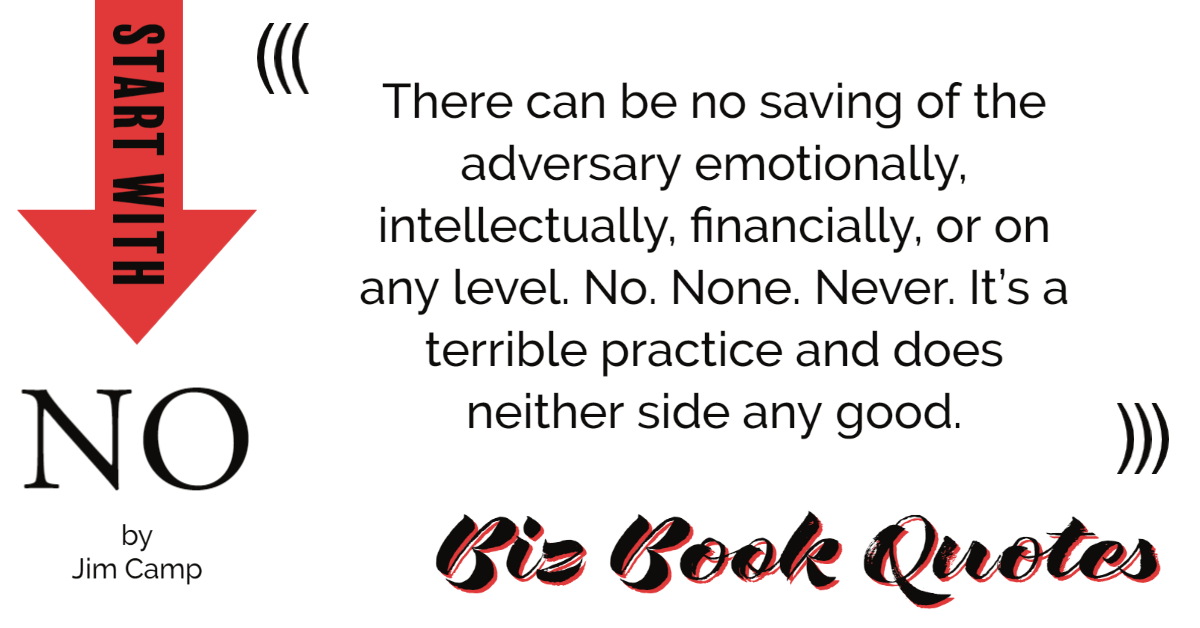
|
Start With No:
There can be no saving of the adversary emotionally, intellectually, financially, or on any level. No. None. Never. It’s a terrible practice and does neither side any good.
|
59 |
|

|
Start With No:
Some form of saving the relationship happens hourly, all over the world, in fall fields of endeavor. It’s the whole idea behind win-win.
|
60 |
|

|
Start With No:
People take ‘no’ as a personal rejection. They get ugly, they go ‘negative’ in a big way. And this is why ‘saving the relationship’ is classic win-win behavior.
|
61 |
|

|
Start With No:
The unspoken – or sometimes spoken – assumption behind win-win is that people enter negotiations trying to build friendly relationships and want to leave with that relationship intact.
|
61 |
